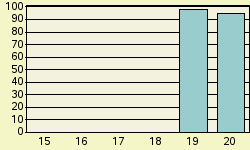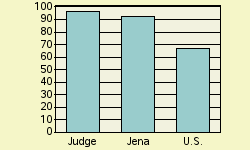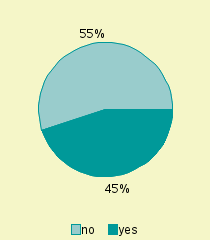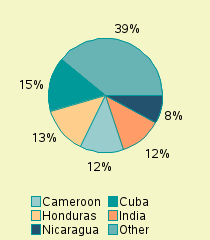Judge Brent H. Landis
FY 2015 - 2020, Jena Immigration Court
Attorney General Jeff Sessions appointed Brent H. Landis to begin hearing cases in October2018. Judge Landis earned a Bachelor of Science in 1982 from Metropolitan State Universityand a Juris Doctor in 1985 from DePaul University. From 2000 to 2018, he was a senior attorneywith Immigration and Customs Enforcement, Department of Homeland Security, in Phoenix.From 1989 to 2011, he was an attorney with the Judge Advocate General’s Corps, U.S. Air Forcein the following locations: Luke Air Force Base, Arizona; Air Reserve Personnel Center,Colorado; Washington, D.C.; Holloman Air Force Base, New Mexico; and Vandenberg AirForce Base, California. From 1986 to 1987, he was a staff attorney with Levine, Shifrin &Associates in Schaumburg, Illinois. Judge Landis is a member of the Illinois State Bar andColorado State Bar.
Deciding Asylum Cases
Detailed data on Judge Landis decisions were examined for the period covering fiscal years 2015 through 2020. During this period, Judge Landis is recorded as deciding 306 asylum claims on their merits. Of these, he granted 11, gave no conditional grants, and denied 295. Converted to percentage terms, Landis denied 96.4 percent and granted (including conditional grants) 3.6 percent. Figure 1 provides a comparison of Judge Landis's denial rate fiscal year-by-year over this recent period. (Rates for years with less than 25 decisions are not shown.)
Nationwide Comparisons
Compared to Judge Landis's denial rate of 96.4 percent, nationally during this same period, immigration court judges denied 66.7 percent of asylum claims. In the Jena Immigration Court where Judge Landis was based, judges there denied asylum 92.6 percent of the time. See Figure 2.
Judge Landis can also be ranked compared to each of the 526 individual immigration judges serving during this period who rendered at least one hundred decisions in a city's immigration court. If judges were ranked from 1 to 526 - where 1 represented the highest denial percent and 526 represented the lowest - Judge Landis here receives a rank of 29. That is 28 judges denied asylum at higher rates, and 497 denied asylum at the same rate or less often. Ranks are tallied separately for each immigration court. Should a judge serve on more than one court during this period, separate ranks would be assigned in any court that the judge rendered at least 100 asylum decisions in.
Why Do Denial Rates Vary Among Judges?
Denial rates reflect in part the differing composition of cases assigned to different immigration judges. For example, being represented in court and the nationality of the asylum seeker appear to often impact decision outcome. Decisions also appear to reflect in part the personal perspective that the judge brings to the bench.
Representation
If an asylum seeker is not represented by an attorney, almost all (88%) of them are denied asylum. In contrast, a significantly higher proportion of represented asylum seekers are successful. In the case of Judge Landis, 54.9% were not represented by an attorney. See Figure 3. For the nation as a whole, about 19% of asylum seekers are not represented.
Nationality
Asylum seekers are a diverse group. Over one hundred different nationalities had at least one hundred individuals claiming asylum decided during this period. As might be expected, immigration courts located in different parts of the country tend to have proportionately larger shares from some countries than from others. And, given the required legal grounds for a successful asylum claim, asylum seekers from some nations tend to be more successful than others.
For Judge Landis, the largest group of asylum seekers appearing before him came from Cuba. Individuals from this nation made up 15.4 % of his caseload. Other nationalities in descending order of frequency appearing before Judge Landis were: Honduras (13.1 %), Cameroon (12.4%), India (12.1%), Nicaragua (7.8%). See Figure 4.
In the nation as a whole during this same period, major nationalities of asylum seekers, in descending order of frequency, were El Salvador (18.1%), Guatemala (15.1%), Honduras (14.7%), Mexico (11.8%), China (10.2%), India (3.7%), Cuba (2.5%), Haiti (1.8%), Cameroon (1.5%), Venezuela (1.3%), Nepal (1.3%), Nicaragua (1.1%), Bangladesh (1.0%).




